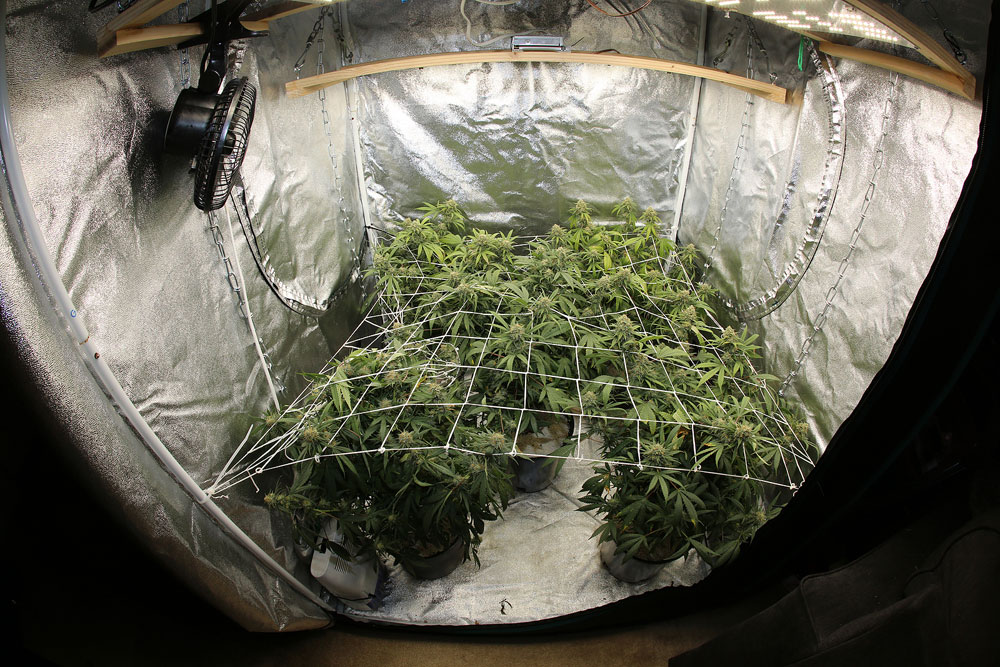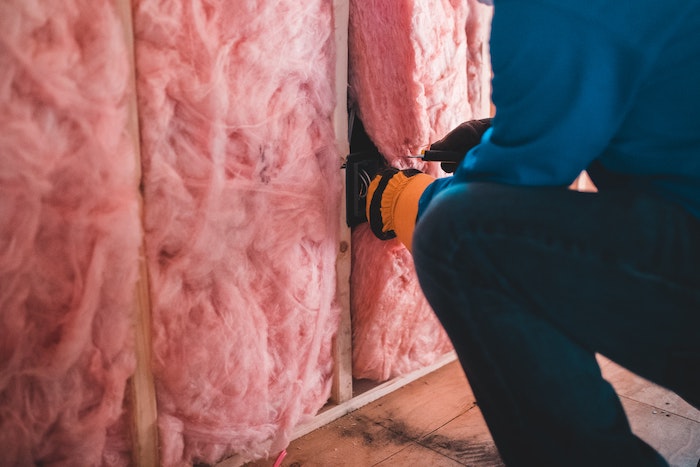To insulate a grow tent, use reflective Mylar or thermal insulation blankets. Seal all seams and openings to prevent heat loss.
Insulating a grow tent is essential for maintaining optimal temperature and humidity levels. Proper insulation helps create a stable environment for your plants, improving growth and yield. It also reduces energy costs by minimizing the need for additional heating or cooling.
Many gardeners overlook this crucial step, leading to inefficient setups. By investing time and materials into insulation, you can enhance your indoor gardening experience. Insulating your grow tent not only protects your plants but also promotes healthier and more vigorous growth. Let’s explore effective methods to insulate your grow tent and maximize its efficiency.

Credit: www.reddit.com
How to Insulate a Grow Tent : Step by Step Guide
Introduction To Grow Tents
Grow tents are great for indoor gardening. They offer a controlled environment for plants. Insulation is key to their effectiveness. It helps maintain the right temperature and humidity.
Using a grow tent has many benefits. It protects plants from pests and diseases. Grow tents also save space, making them perfect for small areas. They allow for year-round gardening, regardless of outside weather.
Insulation plays a crucial role. It keeps heat inside during cold months. Proper insulation prevents temperature fluctuations, which can harm plants. Good insulation also reduces energy costs.
Choosing The Right Insulation Material
Choosing the right insulation material is crucial for your grow tent. Reflective materials help to keep heat inside. Foam boards provide great thermal resistance. Mylar is another popular choice for insulation.
Consider the R-value of each material. The higher the R-value, the better the insulation. Cost is also important. Some materials may be more expensive but offer better performance.
Weight matters too. Lighter materials are easier to install. Think about moisture resistance as well. Some materials can absorb water, affecting your plants.
| Material Type | Advantages | Disadvantages |
|---|---|---|
| Foam Boards | Great thermal resistance | Can be pricey |
| Mylar | Highly reflective | Fragile |
| Reflective Film | Easy to install | Less durable |
Preparation Before Insulating
Gather all necessary tools before insulating your grow tent. You will need insulation material, a utility knife, adhesive, and measuring tape. Make sure to have gloves and a dust mask for safety.
Wear appropriate safety gear while working. Always use gloves to protect your hands. A dust mask helps keep out harmful particles. Ensure the workspace is well-ventilated to avoid inhaling fumes.
Check for any safety hazards in your area. Keep flammable materials away from the workspace. Have a fire extinguisher nearby just in case. Stay focused to ensure a safe and efficient insulation process.
Step-by-step Insulation Process
Begin by measuring the dimensions of your grow tent. Cut the insulation material to fit these dimensions. Use a sharp knife for clean edges. This helps avoid gaps.
Next, install the insulation inside the tent. Make sure it fits snugly against the walls. Use adhesive or tape to secure it in place. This helps keep the temperature stable.
For maximum efficiency, seal all edges and seams. Use weather stripping or duct tape. This prevents heat loss and keeps your plants happy. Regularly check for any wear or damage.
Temperature Regulation Techniques
Using the right heaters and coolers is essential for grow tent success. Choose a small heater for cold nights. Fans can help circulate air and cool the space. Set the heater on a timer for consistent warmth. For hot days, use a portable cooler or air conditioner. This keeps the tent at the perfect temperature.
Monitoring temperature helps in maintaining a healthy environment. Use a thermometer to check the heat levels. Adjust heaters and coolers based on the readings. Keeping a log of temperature changes helps track patterns. Aim for a consistent temperature range for optimal plant growth.

Credit: hgshydro.com
Lighting Considerations In An Insulated Grow Tent
Choosing the right lights is key for an insulated grow tent. LED lights are energy-efficient and produce less heat. They help keep the tent’s temperature stable. HID lights can be powerful but generate more heat. Consider your plant types when selecting lights. Some plants need more light than others.
Managing light leakage is essential for plant growth. Use blackout curtains or light traps to prevent light from escaping. Seal any gaps in the tent with light-proof tape. This will help keep your plants in a dark environment when needed. Proper light management leads to healthier plants and better yields.
Maintaining Your Insulated Grow Tent
Regular checks help keep your insulated grow tent in top shape. Look for any damage or wear on the insulation. Fix any holes or tears quickly to maintain efficiency. Inspect seams and edges for leaks. A well-maintained tent means better temperature control.
Cleaning is essential for plant health. Remove dust and debris regularly. Use a gentle cleaner to avoid harming your plants. Pest control is also vital. Check for insects or pests frequently. Use safe methods to eliminate them. Consider natural pest repellents for a safer option.

Credit: www.mjseedscanada.com
Common Mistakes To Avoid
Overinsulation can lead to serious problems in a grow tent. Too much insulation traps heat. This can cause plants to suffer from heat stress. Always monitor the temperature inside. Use a thermometer to check for extremes.
Ignoring ventilation needs can also harm your plants. Proper airflow helps regulate temperature. It prevents humidity build-up, which can cause mold. Install fans to keep air circulating. Check for any blockages in vents regularly.
Frequently Asked Questions
How Do I Choose Insulation Material For A Grow Tent?
When selecting insulation material, consider thermal resistance and moisture resistance. Popular options include Mylar, foam boards, or reflective materials. Ensure the chosen insulation fits your tent size and is easy to install. This will help maintain optimal temperatures and improve energy efficiency in your grow tent.
Can I Use Blankets For Grow Tent Insulation?
Using blankets for grow tent insulation is possible but not ideal. They may provide some insulation but can trap moisture, leading to mold. Instead, opt for specialized insulation materials designed for grow tents. This ensures better temperature control and a healthier environment for your plants.
How Do I Prevent Heat Loss In A Grow Tent?
To prevent heat loss, ensure your grow tent is properly sealed. Use insulation material on walls and ceiling, and check for air leaks. Cover vents with adjustable flaps and use thermal curtains. These steps will help maintain a stable temperature, promoting healthier plant growth.
Is Reflective Material Necessary For Grow Tent Insulation?
Yes, reflective material is crucial for maximizing light efficiency. It helps redirect light back to your plants, enhancing growth and yield. Using Mylar or reflective foil can improve light distribution while providing some insulation. This dual functionality makes reflective materials a valuable addition to your grow tent setup.
Conclusion
Proper insulation is crucial for maximizing your grow tent’s efficiency. It helps maintain optimal temperatures and reduces energy costs. By following the steps outlined in this guide, you can create a better environment for your plants. Invest time in insulation to ensure healthy growth and a successful harvest.
Happy gardening!

